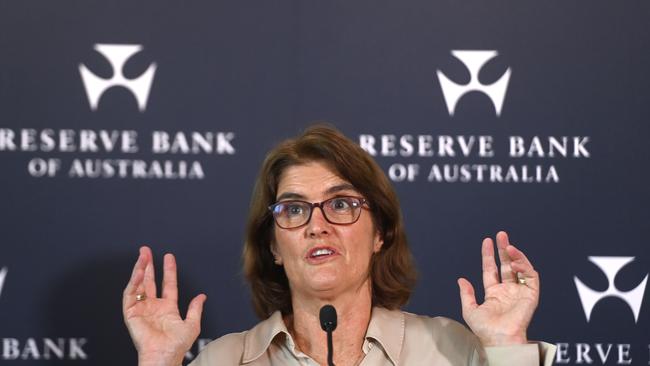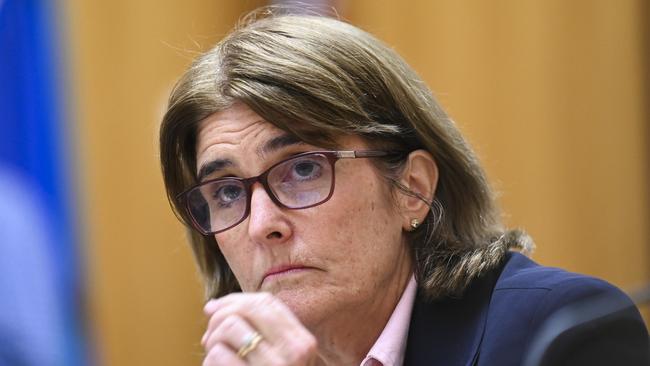
RBA Governor Michele Bullock was peppered with questions about the direction of interest rates by the media after the central bank’s policy meeting on Tuesday.
Reporters from a vast number of outlets were desperately trying to get her to confirm the policy needle had swung away from interest rate increases toward interest rate cuts.
But Bullock, who has led the RBA since September, would only say all options are on the table for the central bank.
“It’s too soon to rule anything in or out,” Bullock told reporters. “There are risks on both sides … where we are now is where we need to be.”
Those bland remarks haven’t helped money market traders or economists who are either laying big investment bets based on their understanding on the future cost of borrowing, or trying to see through the fog to advise customers on what is coming next.
The hours following the RBA’s policy meeting were marked by an intense market-wide debate about what Bullock was actually trying to say.

Did the RBA pivot toward a firm neutral stance, or did it retain a mild tightening bias?
It’s arcane questions like these which keep a vast army of investment gurus employed.
Amid all this, Bullock was probably quietly chuffed she had successfully denied RBA-watchers any degree of certainty.
It’s always been the case, central bankers enjoy nothing more than speaking at length while communicating very little.
But Bullock’s obfuscation is no game.
There’s good reason for why the RBA is keeping things deliberately unclear, and its approach paid off handsomely after the publication on Thursday of stellar employment data for February.
There were more than 100,000 new jobs created in February and the unemployment rate plunged to 3.7 per cent from 4.1 per cent. Economists simply didn’t see these numbers coming, and neither did the RBA.
Had Bullock given guidance on Tuesday rate cuts were near, she would have been deeply regretting her actions now.
She would have had to walk back her remarks, further damaging the central bank’s already battered reputation.
To be sure, the RBA has been reluctant for some time to gaze too deeply into its crystal ball and tell the money markets what it is seeing.
It did that through the pandemic and got into trouble.
In late 2021, the RBA tried to reassure a worried population by pointing to a future where interest rates might stay at emergency lows for years to come.
That guidance prompted legions of starry-eyed hopefuls to get into massive mortgages.
But it all came crashing down when the inflation genie escaped its magic lamp and began driving up prices globally. The RBA had to start raising rates at speed, and anger in the Australian suburbs rose with it.
So, Bullock knows the risks of giving too much away.
With the peak in interest rates still highly uncertain, it’s good policy for her to stay nimble and promise nothing.
Economists reacted with stunned disbelief to the employment data, with some ascribing the massive jump in employment to statistical noise.
Others took the report at its word and announced changes to their forecasts for interest rates.
Citi, for example, abandoned its call for two cuts in the second half of this year, adding it now sees only one cut. But, it also warned the rate cut cycle might now be delayed until next year.
There’s already a considerable number of economists who have bet the RBA will delay cutting rates until 2025, and with unemployment suddenly back at its lowest levels in around half a century, those bets are looking good.
Adding to the confusion for markets and the RBA is recent data showing the economy in 2023 grew at its slowest pace in 30 years.
And looking overseas to places like the U.S., it is clear the road to lowering inflation is going to be bumpy, which is a word Bullock is fond of using at the moment.
The next monthly employment numbers could show a collapse in employment in March. Labor market data can be subject to wild swings.
But, for now, reporters attending the RBA’s press conference are likely to have very little luck in getting Bullock to look more than a few yards into the future.





The Reserve Bank of Australia’s policy of offering up little which resembles meaningful guidance on the outlook for interest rates appears to be paying huge dividends now.